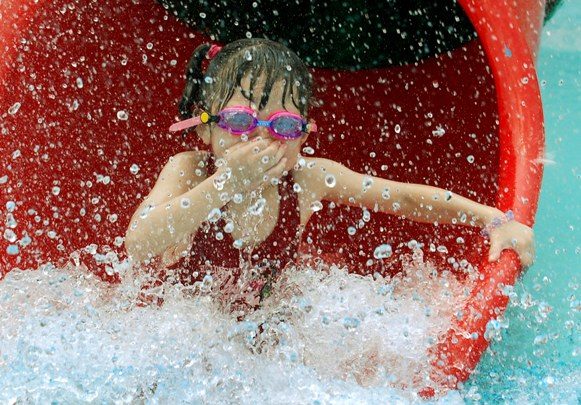KDHE urges Kansans to practice water safety over holiday weekend

TOPEKA – The Kansas Department of Health and Environment (KDHE) would like to encourage the public to exercise caution while enjoying streams, rivers and lakes over the Memorial Day weekend and through the summer.
Prolonged rains in most parts of the state have contributed to an increased risk of unintentional injury and bacteria in open bodies of water.
Harmful bacteria, parasites and algae are common in surface water, and those who visit lakes in Kansas should be careful not to ingest the water. People should avoid recreational activities in streams and lakes after rainfall and runoff events while the water is cloudy or opaque to minimize the risk of exposure to germs. According to the Centers for Disease Control and Prevention (CDC), the germs found in the water and sand often come from human or animal feces.
Water from the heavy rain picks up anything it comes in contact with, including feces from where animals live and can drain into swim areas. Water contaminated with these germs can make you sick if you swallow it or can cause an infection if you get into the water with an open wound.
Individuals should take precautions such as not swallowing the water, keeping sand away from their mouths and children’s mouths, taking frequent bathroom breaks and washing their hands before preparing or eating food.
Exposure to contaminated surface water can lead to Escherichia coli (E. coli) infection. Although most strains of E. coli are harmless, others such as Shiga Toxin-Producing Escherichia coli (STEC), can cause life-threatening illnesses. Last year there were 5 STEC cases among children associated with recreational activities at Eureka Lake. As a reminder, children are more likely to swallow water while swimming than adults. The symptoms of a STEC infection vary for each person.
Symptoms often include severe stomach cramps, diarrhea and vomiting. Individuals may experience a fever, usually not very high (less than 101˚F/38.5˚C). Most people get better within five to seven days. For more information about STEC, including a complete list of symptoms, visit the CDC website. If individuals believe you are experiencing symptoms of STEC after swimming in a Kansas lake, please contact your health care provider.
.



